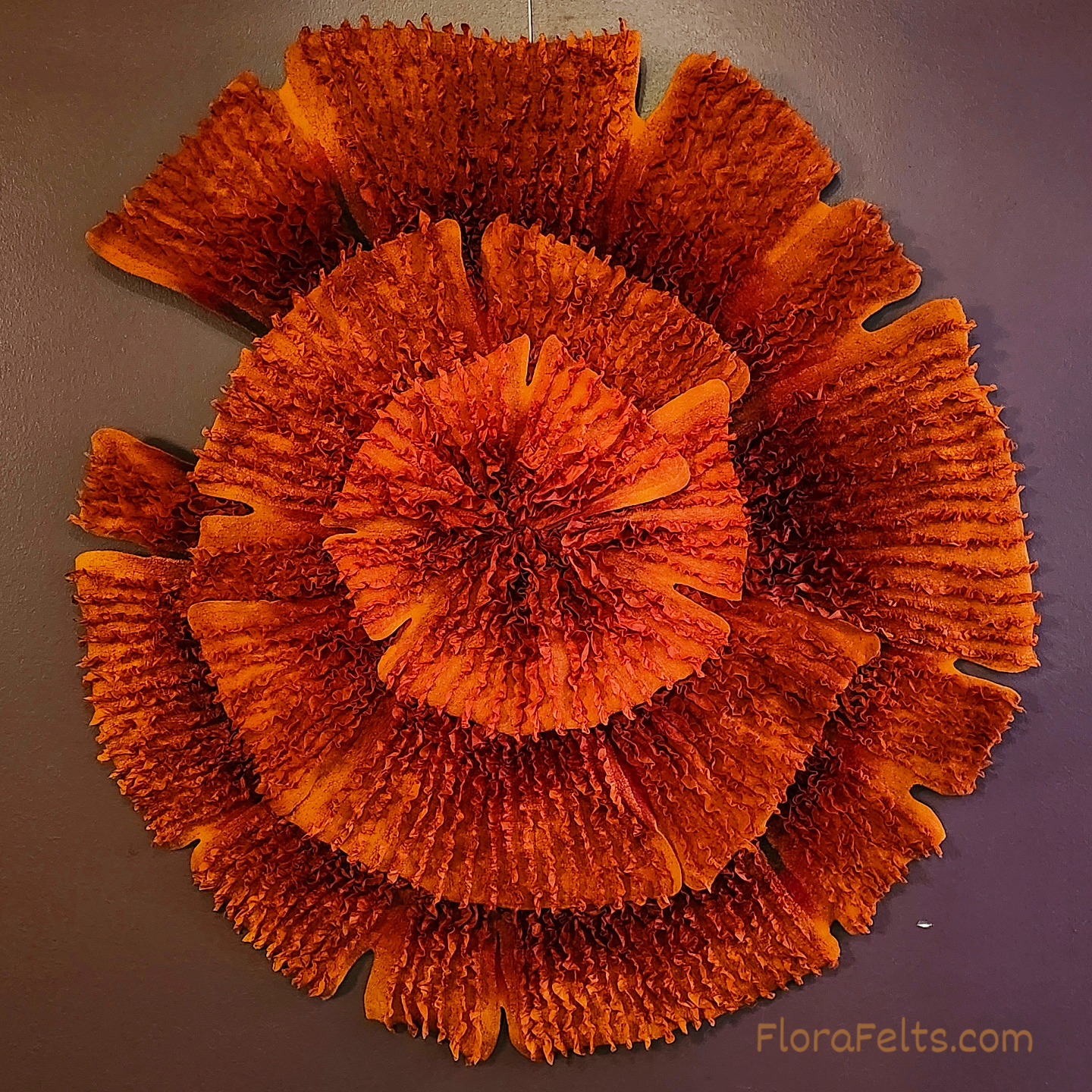Flóra Carlile-Kovács, a fiber artist based in West Seattle, is bringing her innovative textile exhibit, Feltscapes : Lichens, to the Labour Temple in Seattle at 5030 1st Ave S, from February 1 to March 31, 2025. The exhibit is open weekdays between 9 am and 3 pm, with special arrangements possible via email. The Art Walk is on March 14, from 6-9 pm, and the Artist Reception is March 20th, at 7pm.
Carlile-Kovács applies the ancient textile technique of felting in innovative ways to reflect the natural beauty of the Pacific Northwest. Originally from Hungary, she combines raw, carded wool with water, soap, and vigorous kneading to create felt, a durable, dense, and environmentally sustainable material. Her textile art involves constant experimentation, pushing the boundaries of this ancient technique. In 2022, she developed a technique using pleated and hand-dyed silk strips felted into a merino wool base. The rhythm and varied size of the pleats create a three-dimensional, abstract picture.

Inspiration from Nature: Her work is mainly inspired by shapes, textures, and beauty in the surrounding nature of the Pacific Northwest, reflections on water, and magnified details such as butterfly wings or lichen surfaces. The Feltscapes exhibit specifically explores the organic shapes, textures, and colors of lichens on a magnified scale.
Lichens as Inspiration: Lichens are composite organisms, a mutually beneficial symbiosis of algae and fungi. The algae feed the fungi with carbohydrates, while the fungi protect the algae and gather moisture and nutrients. Lichens grow very slowly, about 1 mm a year, and some are among the oldest living organisms on Earth, estimated to be 9–10,000 years old. Shrubby and leafy lichens are sensitive to environmental disturbances and serve as bio-indicators of air pollution.
The Felting Process: Carlile-Kovács draws parallels between lichens and her handmade felt. In her work, silk fibers, silk fabrics, and wool fibers are merged by felting to form organically shaped structural pieces. The wool fibers capture the silk to provide a strong base, while the silk provides rich textures, color, and luster through the shrinkage in the process.
Evoking Sensation: Rather than simply copying lichens, Carlile-Kovács intends to evoke the sensation of seeing or touching these organisms in the wild. Her goal is to represent the natural ambience of the Pacific Northwest in modern spaces, making them warm, relaxing, inviting, and calm. She aims to break the boundary between fine craft and art, bringing felt back to modern living spaces and interior design. Wool is organic and renewable, making handmade felt a versatile material to soften modern industrial interiors while providing environmental benefits.